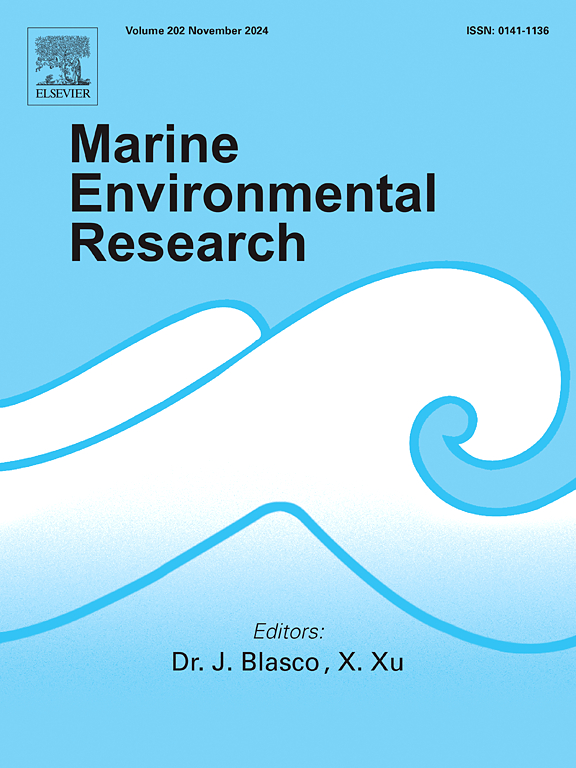Evaluation of heavy metal pollution and ecological risk of surface sediments in a tropical mountainous River-Estuary-Shelf Continuum system: A case study of the Selangor River, Malaysia
IF 3
3区 环境科学与生态学
Q2 ENVIRONMENTAL SCIENCES
引用次数: 0
Abstract
As human activities continue to increase, the global production of pollutants has increased significantly, with the majority of pollutants being transported to the ocean via rivers, resulting in intensified pollution in estuaries and coastal areas. To maintain a healthy marine ecological environment, it is necessary to consider rivers, estuaries, and coastal seas as integrated systems and implement pollution management based on the concept of land–ocean integration. In this study, heavy metal elements in the surface sediments of Selangor River-Estuary-Coastal Shelf Continuum were collected and analysed to assess their pollution levels and potential ecological risks. The results show that the heavy metal content is high in the downstream and estuarine regions, with a general decreasing trend observed from nearshore to offshore in the coastal shelf area. The heavy metal pollution assessment indicates that the surface sediments of the Selangor River-Estuary-Coastal Shelf continuum were contaminated, with the most severe pollution occurring downstream and within the estuary. The pollution levels gradually decrease after exiting the estuary. The ecological risk associated with heavy metal pollution in rivers, estuaries, and southeastern coastal areas was classified as moderate to serious, whereas other areas exhibited only slight ecological risks. Specifically, As causes serious pollution in the river and estuary, with moderate-to-serious pollution in the coastal shelf area and moderate-to-serious ecological risks, mainly originating from mining within the river basin. Pb causes moderate pollution in the river, estuary, and coastal areas, with slight ecological risks due to mining within the river basin and inputs from nearby rivers, ports, and industrial activities. Other heavy metals cause minor pollution and pose minimal ecological risks.
求助全文
约1分钟内获得全文
求助全文
来源期刊

Marine environmental research
环境科学-毒理学
CiteScore
5.90
自引率
3.00%
发文量
217
审稿时长
46 days
期刊介绍:
Marine Environmental Research publishes original research papers on chemical, physical, and biological interactions in the oceans and coastal waters. The journal serves as a forum for new information on biology, chemistry, and toxicology and syntheses that advance understanding of marine environmental processes.
Submission of multidisciplinary studies is encouraged. Studies that utilize experimental approaches to clarify the roles of anthropogenic and natural causes of changes in marine ecosystems are especially welcome, as are those studies that represent new developments of a theoretical or conceptual aspect of marine science. All papers published in this journal are reviewed by qualified peers prior to acceptance and publication. Examples of topics considered to be appropriate for the journal include, but are not limited to, the following:
– The extent, persistence, and consequences of change and the recovery from such change in natural marine systems
– The biochemical, physiological, and ecological consequences of contaminants to marine organisms and ecosystems
– The biogeochemistry of naturally occurring and anthropogenic substances
– Models that describe and predict the above processes
– Monitoring studies, to the extent that their results provide new information on functional processes
– Methodological papers describing improved quantitative techniques for the marine sciences.
 求助内容:
求助内容: 应助结果提醒方式:
应助结果提醒方式:


